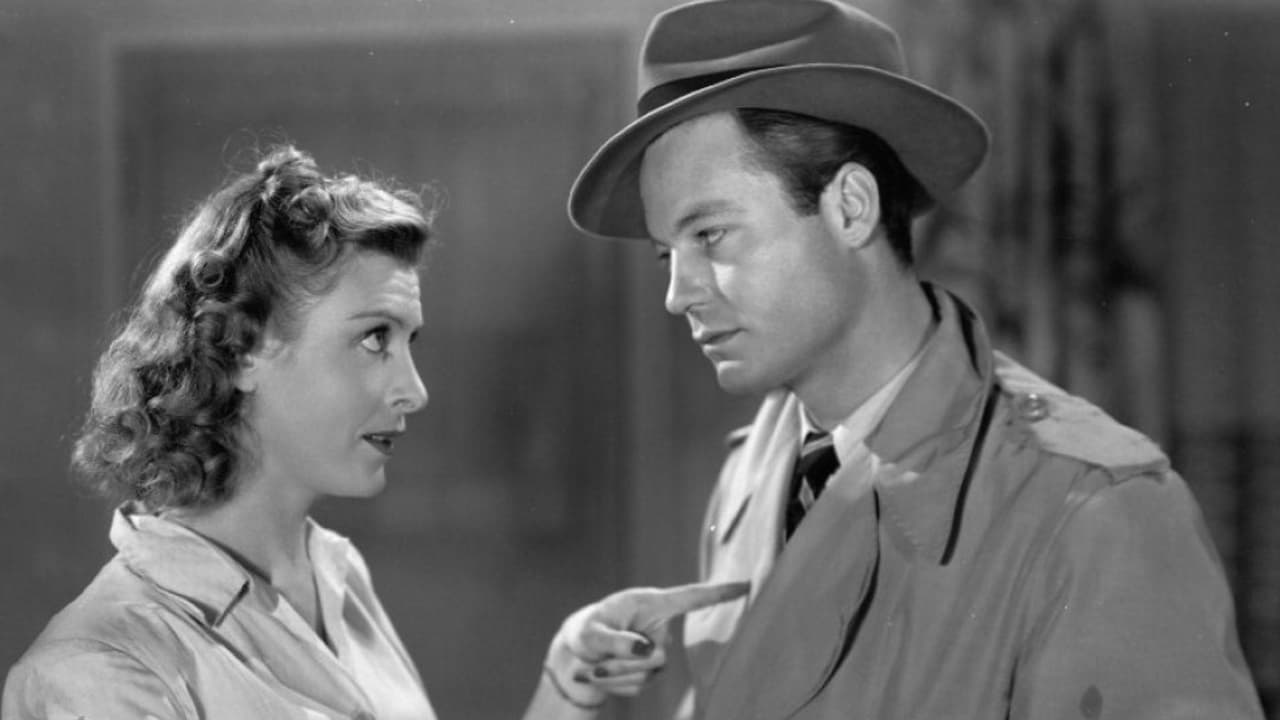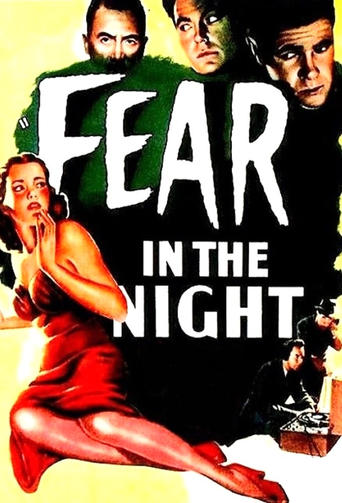

This one is a suspenseful little mystery-thriller - a crime noir. For me, this is one of the better, more mysterious mystery-thrillers I've seen from the 1940s. Worth watching if you like these types of films.Vince Grayson (Kelly) is a young man who is easily hypnotized and he's had a horrible nightmare that he murdered someone and a mirrored room but it seemed all to real to him. "It was dream, no it's real" - he kept debating himself, yet he knew it had to be real so he enlisted the help of his detective brother-in-law Cliff to find out the answers.The questions are: Did Vince really kill someone? Is Vince making all this up as reality when it was only a dream? Is Vince having premonitions? If Vince didn't kill anyone then who did? 8.5/10
... View MoreI know nothing about this film except my own opinion of it since I watched it by random and still have not read so much as a word about it anywhere – not even the TV guide! I saw it was a thriller noir and that was enough and very quickly the film gets into the genre device of the frenzied dream state with a calm narration by the person suffering it; it will be a device familiar to fans of the genre and it is one that the film embraces stylistically in order to open the film. The plot is that a normal guy who works in a bank has this dream where he murders a man in a small mirrored room while a woman looks on. He wakes the next day with some cuts and bruises and is unsure if it was real or not.The mystery goes from there but the film weakens itself from the very start and only hurts itself more from then on. By opening immediately in this way the film seeks to grab the attention but we have no context, no reason to care, no questions about what we see, all because we have no idea who anyone is or what they do. Once we get through this scene there is a little bit of background but mostly we stay in the feverish panic stage as Vince "remembers" stuff he can't possibly know, thus making the whole film essentially one of build as he realizes that, somehow, he really was where his dream had him. Problem is that, without context, this is something we know from the very start, because this device is so common and, if it isn't real then there really is no point to the whole film – so the reveals don't add clarity or drama, they simple continue to reinforce what we already know. Eventually we start to make progress but we do this off characters that are introduced as those involved so in terms of drama it is really very much a case of "here's Jim – he did it. Huh? Who's Jim – never worry about that, you got your solution".It isn't quite this bad but it is pretty close and at the end of the film I realized that I had never cared for or known any of the characters and thus it was only the device that made me curious about the outcome. There is at least one nice touch in the conclusion but that is all and otherwise it feels like a really hollow film where the original idea was the starting point but the structure and delivery never really got sorted out. The cast don't help this feeling – in particular DeForest Kelley can only mug melodramatically from the very start – which means this is the only character we know. The supporting cast are stiff but yet do the job I suppose – few of them have much to work with. The direction etc is by the numbers and feels like a lift from other, better films.Overall this is no more than a so-so film that uses a device that other films have used to better effect. The structure and delivery of this device is way off and left me really having no reason to care either for the characters or for the solution too much. Nothing really clever or of note here, just a by-the-numbers affair that doesn't have much of its own to do.
... View MoreThis film starts out very intriguingly then goes quickly downhill when it gets bogged down in mumbo jumbo about hypnotism.I thought the director did a great job of creating a sense of horror and creepiness as Clif tries to figure out why his murderous dream seemed so lifelike. There are a number of scary scenes. How claustrophobic it felt in that car after Clif had broken up with his doormat-like girlfriend yet they were stuck in that backseat together.The hypnotism stuff was hackneyed, anticlimactic, and not believable.I liked the character of the tough-guy cop who's clearly in love with his wife. She doesn't quite seem interesting enough to balance out such unswerving loyalty and support, but that doesn't matter much.I'm surprised past reviewers have given this film such a high rating because the story doesn't quite add up.
... View MoreWaking from a dream in which he commits a murder, a man finds clues suggesting that maybe it was not a dream after all. The film offers an intriguing premise but the execution is too poor to make this anything more than a curiosity piece for fans of Kelley (McCoy on "Star Trek"), making his film debut. Unfortunately, Kelley turns in a less than compelling performance here as the suspected killer. Faring better is Kelly as his brother-in-law, a cop who is skeptical of Kelley's claim that it was all a dream. It is incompetently directed by Shane, a writer making his directorial debut. The script is choppy, the acting is uneven, and the visual effects are cheesy.
... View More